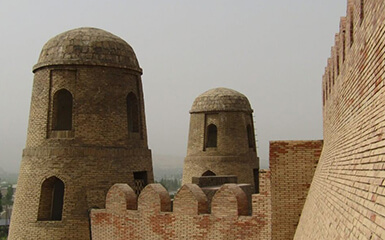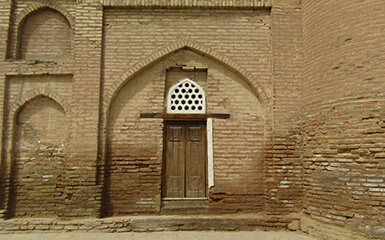Kok Gumbaz
Ajina Teppa
Ancient Panjakent
Anzob Tunnel
Beshkent Qala
Childukhtaron
Khazrati Shokh
Mug Teppa
Gharm Chashma
Hisor Historical
Haji Yaqub mosque
Hazrati-Bobo complex
Lake Iskanderkul
Kalai-Khumb
Karatag
Karon
Khishtin caravanserai
Khorog
Khulbuk
Lake Karakul
Abdullatif Sultan
Madrasai Kuhna
Abu Abdullah Rudaki
Khoja Mashhad
Khudoyor Valami
Makhmudi Azam
Mir Sayyid Ali Hamadani
Muhammed Bashoro
Sheikh Muslihiddin
Nurek Mountain Lake
Pamir
Sarazm
Sari-Khosor
Seven Lakes
Shirkent
Chiluchorchashma
Takht-i Sangin
The main attraction of Tajikistan (well, certainly one of them) can be called the Hisor Historical and Cultural Reserve. This pearl of ancient history is located near Dushanbe, just 30 kilometres away. The complex of the protected area combines an ensemble of archaeological and architectural monuments built at different times. The territory of the combined complex occupies almost 100 hectares.
The protected area rests in the Hisor valley, which is washed by several rivers. The origin of life in this depression dates back to the Stone Age. For a long time, the valley was part of various kingdoms, which is confirmed by the remains of settlements found during excavations.
The heyday of Hisor began in the middle Ages, when the settlement became famous as a trading and handicraft point. In the 18th century, the settlement became part of the Bukhara Emirate. The Hisor fortress reminds of those times. Today it is a real open-air museum, which includes the gates of the fortress, built according to all the canons of the times of the emirate, Old and New madrasahs, mausoleum and mosques, as well as a caravanserai.
A historical museum is located in the old madrasah, which has been well preserved to this day and where classes ceased to be held only a century ago. Having visited it, you can see with your own eyes the unique exhibits. All of them were found during excavations on the territory of ancient Hisor, as well as in the surrounding area. They give a vivid and accurate picture of the multifaceted history and influence of the different kingdoms, into which Hisor passed over the centuries.
To the south of the old madrasah is the mausoleum of Mahdumi Azam of the 16th-17th centuries. Mahdumi Azam translated means "The Greatest Lord" and is not a name, but rather a title or nickname. It is interesting that on the territory of Central Asia there are several complexes under this name, which are associated with various existing people, state or religious figures. Who specifically is buried in the Hisor mausoleum has yet to be established by researchers, although there are already some versions and assumptions on this score.


